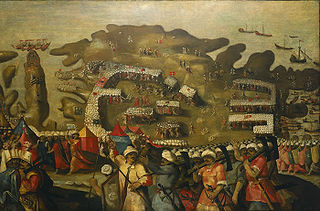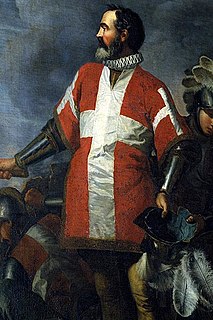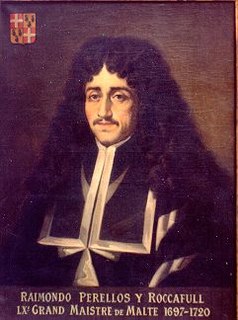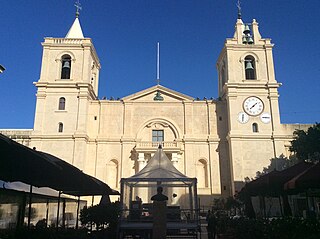
St John's Co-Cathedral is a Roman Catholic co-cathedral in Valletta, Malta, dedicated to Saint John the Baptist. It was built by the Order of St. John between 1572 and 1577, having been commissioned by Grand Master Jean de la Cassière as the Conventual Church of Saint John.

Paola is a town in the South Eastern Region of Malta, with a population of 7,864 people. Paola is renowned for the Ħal Saflieni Hypogeum, its large parish church, its beautiful square with shopping centres, the Good Friday procession, and its football club, Hibernians FC. Mariam Al-Batool Mosque, the only mosque in Malta, as well as an Islamic Cultural Centre are found in Paola. The country's correctional facilities and the largest burial grounds, the Addolorata Cemetery are also in this town. The town is a commercial centre in the Southern Harbour area of Malta, about 5 km from the capital Valletta.

Gudja is a village in the Southern Region of Malta, with a population of 2,997 as of March 2013. The village is located on high grounds, south of Valletta. It is administered by the Gudja Local Council. A number of schools, clubs, public gardens and recreations places are found around the village. The Malta International Airport is located here.

Naxxar is a town in the Northern Region of Malta, with a population of about 13,443 people as of March 2014. The Naxxar Church is dedicated to Our Lady of Victories. The annual village feast is celebrated on 8 September. Naxxar was formerly known for hosting the Maltese International Trade Fair at Maltese International Trade Fair Grounds.

Saint James Cavalier is a 16th-century cavalier in Valletta, Malta, which was built by the Order of St. John. It overlooks St. James' Bastion, a large obtuse-angled bastion forming part of the Valletta Land Front. St. James was one of nine planned cavaliers in the city, although eventually only two were built, the other one being the identical Saint John's Cavalier. It was designed by the Italian military engineer Francesco Laparelli, while its construction was overseen by his Maltese assistant Girolamo Cassar. St. James Cavalier never saw use in any military conflict, but it played a role during the Rising of the Priests in 1775.
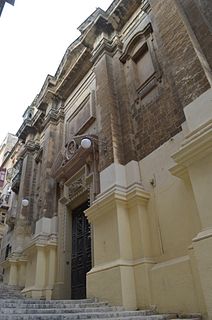
The Franciscan Church of St Mary of Jesus is a church in Valletta, Malta, which is dedicated to St Mary of Jesus and is cared for by the religious order of Friars Minor. It came to be popularly known by the Maltese as Ta' Ġieżu. Ta' Ġieżu is a local corruption of Ta' Ġesù.
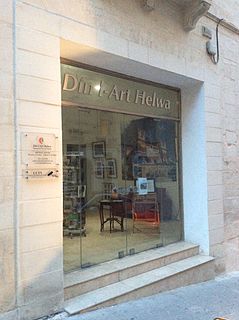
Din l-Art Ħelwa is a non-governmental and non-profit, voluntary organisation founded in 1968, by Maltese Judge Maurice Caruana Carron, to safeguard Malta's cultural heritage and natural environment. Since its foundation, Din l-Art Ħelwa has restored numerous cultural sites of historic and environmental importance. The organisation promotes the preservation and protection of historic buildings and monuments, the character of Malta's towns and villages, and places of natural beauty. They stimulate the enforcement of existing laws and the enactment of new ones for the protection of Malta's natural and built heritage.
Girolamo Cassar was a Maltese architect and military engineer. He was the resident engineer of the Order of St. John, and was admitted into the Order in 1569. He was involved in the construction of Valletta, initially as an assistant to Francesco Laparelli, before taking over the project himself. He designed many public, religious and private buildings in the new capital city, including Saint John's Co-Cathedral, the Grandmaster's Palace and the auberges. He was the father of Vittorio Cassar, another architect and engineer.

Saint John's Cavalier is a 16th-century cavalier in Valletta, Malta, which was built by the Order of St. John. It overlooks St. John's Bastion, a large obtuse-angled bastion forming part of the Valletta Land Front. St. John was one of nine planned cavaliers in the city, although eventually only two were built, the other one being the identical Saint James Cavalier. It was designed by the Italian military engineer Francesco Laparelli, while its construction was overseen by his Maltese assistant Girolamo Cassar.
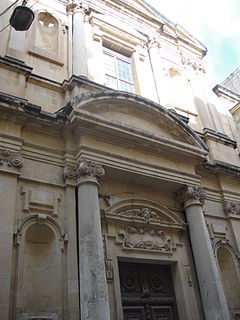
The Church of Our Lady of the Pillar is a 17th-century church located in Valletta, Malta.
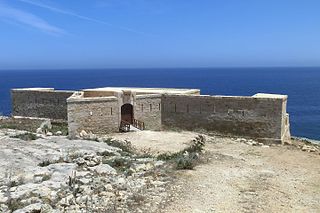
Saint Anthony's Battery is an artillery battery in Qala, Gozo, Malta. It was built by the Order of Saint John between 1731 and 1732 as one of a series of coastal fortifications around the coasts of the Maltese Islands. It is one of only two surviving batteries on Gozo, the other one being Qolla l-Bajda Battery in Żebbuġ.

The Chapel of St Mary is a medieval chapel located in Bir Miftuħ, limits of Gudja, Malta.

The Chapel of the Annunciation is a Medieval Roman Catholic church located in Ħal-Millieri, limits of Żurrieq, Malta.

The Church of Our Lady of Liesse is a church in Valletta, Malta. The church was built in 1740 on the site of a 17th-century church. The church is located near the shores of the Grand Harbour, close to Lascaris Battery and the site of the fish market. It is especially venerated by the people of the port area. There is also devotion to Our Lady of Liesse in Liesse, France.

Mistra Gate is an ornate gateway in the limits of St. Paul's Bay, Malta. It was built in 1760 as the entrance to a large estate belonging to the Monte della Redenzione degli Schiavi. The gate was extensively restored in 1937 and again in the 1990s.
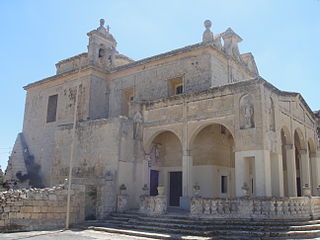
The Shrine of Our Lady of Mercy also known as Chiesa Della Misericordia or simply known as Tal-Ħniena is a Roman Catholic church located i the village of Qrendi, Malta. The church is referred to as a sanctuary due to people's devotion to the Virgin Mary of Mercy.

The Basilica of the Nativity of Our Lady is a Roman Catholic parish church in Xagħra, Gozo, Malta, dedicated to the Nativity of Mary. The present building was constructed between 1815 and 1855, on the site of a smaller church which had been built in the 17th century. The dome was added in 1892. The church became a collegiate church in 1900, and a basilica in 1967.
Alessio Erardi (1669–1727) was a Maltese painter. He was the son of the artist Stefano Erardi and his wife Caterina Buttigieg. He initially studied art with his father, and eventually spent five and a half years in Rome between 1695 and 1701. His style is regarded as an early form of Baroque, and he was influenced by both his father and Mattia Preti.


